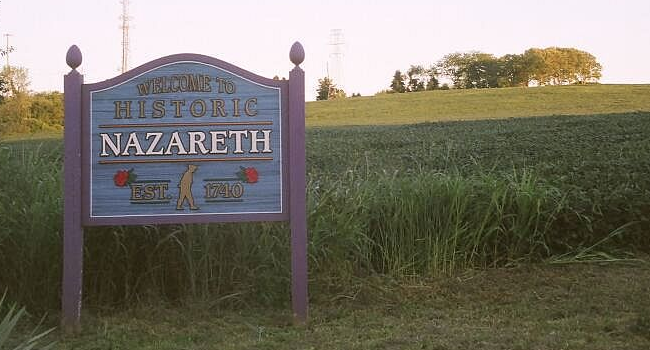During the Monday, December 4 Northampton School Board meeting, Superintendent Joseph Kovalchik and Assistant Superintendent Michelle Shoeneberger provided a presentation on the district’s academic updates.
To begin, Kovalchik provided the district’s demographic information while pointing out that the district has seen a rise in the percentage of special education students, which is now 18.2%, and economically disadvantaged students, which has grown to 42.7%, as well as a rise in minority students with Asian students accounting for 0.5% of the population, Black students accounting for 3.2%, Hispanic students accounting for 14.2%, White students accounting for 79.3%, and students of two or more races accounting for 2.8%.
Additionally, 1.3% of students are English-language learners, 0.5% of students are in foster care, 0.9% of students are homeless and 0.4% are military connected.
Kovalchik also pointed out that these and other factors can influence academic performance, such as student attendance, student motivation, student behavior, physical and mental health, student peer relationships, staff absenteeism, home situations, family engagement and perception of standardized assessments.
Next, Schoeneberger began providing an overview of district assessments such as PSSAs, Keystone Exams, Renaissance Star, DIBELS, quarterly assessments, classroom assessments, other high school assessments and additional data.
With regard to the PSSAs, which include English language arts, mathematics and science in Grades 3-8, the 2023 PSSA achievement and PVAAS growth district results included 53.3% of students proficient/advanced in ELA (compared to the state average of 53.7%), 41% proficient/advanced in math (compared to the state average of 39.4%) and 76% proficient/advanced in science (compared to the state average of 65.5%).
PSSA district strengths included an overall increase in math and science achievement and grade 4 ELA, Math and Science achievement growth, whereas challenges included inconsistencies in growth patterns by building/subject area, ELA achievement (most notably in Grade 3) and a drop in math achievement from Grade 5 to 6. Additionally, the chart showed a decline in ELA proficiency in Grades 3, 4, 7 and 8 from previous year and a decline in math proficiency in Grade 7 from previous year (all other grades saw an increase in proficiency from 2022).
With regard to the DIBELS assessment, Grades K-3 showed a significant increase in students at or above the benchmark.
For the Star Assessment, the presentation showed that the percentage of students at or above the reading benchmark slightly decreased by 1-2% in Grades 5, 6 and 8, whereas Grades 3 and 4 saw a significant increase in percentage of students at or above benchmark, while other grades remained about the same. Additionally, the percentage of students being at or above the benchmark for math decreased in Grades 2, 4, 6 and 7, whereas other grades stayed approximately the same in terms of proficiency.
With regard to the Keystone Exams, there was a 2% increase in literature proficiency with 69% of Grade 11 test takers being proficient or advanced, whereas the Grade 11 percentage of students proficient/advanced in biology increased from 31% in the 2021-22 school year to 54% in 2022-23, and the Grade 11 percentage of students proficient/advanced in Algebra I decreased from 74% in the 2021-22 school year to 42% in 2022-23.
Schoeneberger identified that the district’s next steps will be formative assessments and instructional decision-making, targeted interventions, math classroom diagnostic testing, structured literacy through professional development and auditing, implementation of new Grade 6 master schedule; preparation for shift to STEELS; and to continue the cycle of improvement by analyzing data and monitoring adjustments to stay on top of things.
Next, information on students utilizing the Act 158 PDE (alternative) graduation pathways showed the following: 39.92% (196 students) utilized the Keystone Proficiency Pathway; 14.46% (71 students) utilized the Keystone Composite; 12.42% (61 students) utilized the pathways CTE Concentrator; 10.79% (53 students) utilized the Alternative Assessment; 5.91% (29 students) utilized the Evidence-Based Pathways; 3.26% (16 students) receiving a waiver for students in Grade 12 experiencing extenuating circumstances; and 5.09% (25 students) had an Individualized Education Plan.
In regard to discipline, there were 381 total district incidents for the 2022-23 school year, which is down from 436 total incidents the previous school year. Additionally, the number of discipline referrals decreased by 18% from the previous year, students in ISS decreased by 46%, major/minor disruptions decreased by 45%, major/minor defiance decreased by 28%, physical altercations decreased by 75% and daily attendance increased by 1%.
Last, the presentation showed 2024-2025 NAHS proposed new program of studies courses, which include: Business and Computer Technology – Academic Success to replace Advanced Google Applications and Explorations in Coding courses; AP English Seminar; AP Precalculus; Music Theory; Beginning Guitar/Ukulele Lab; Honors Engineering Essentials; Honors French III and IV; and Preparing for the Future, which allows IEP students to earn academic credit for participation in their transition activities.
Residents and parents can access the 2022-23 NASD Academic Report on the district website and contact Assistant Superintendent Schoeneberger with any questions.
The next Northampton School Board meeting will be held on Monday, January 8 at 6:30 p.m. in the high school auditorium, located at 1619 Laubach Ave.








